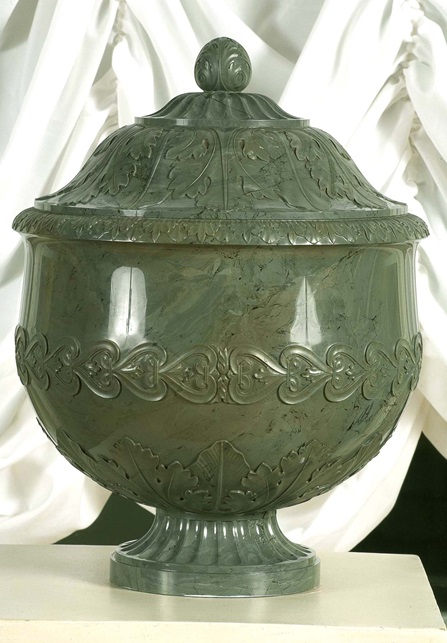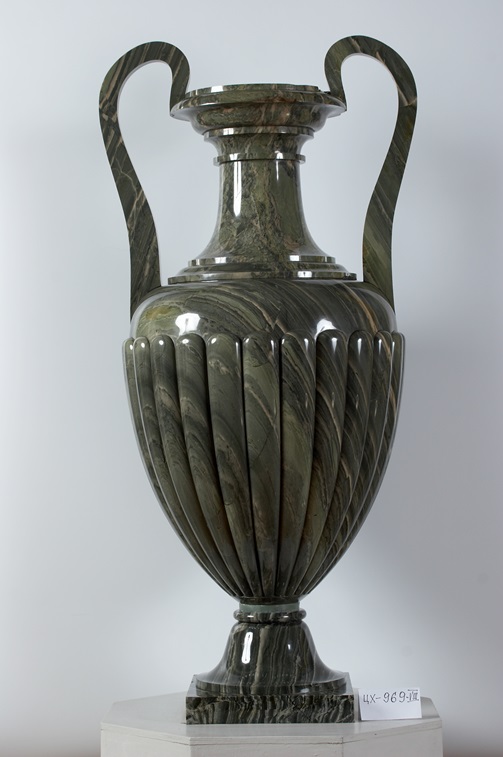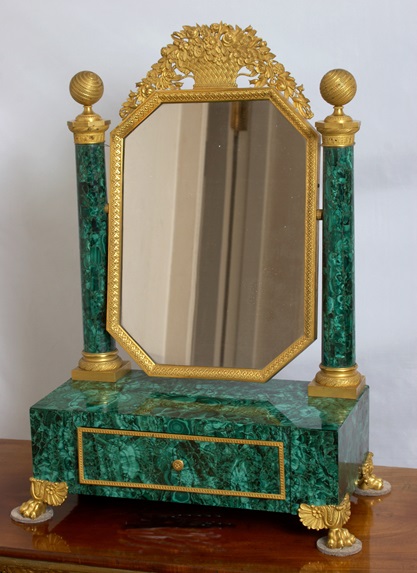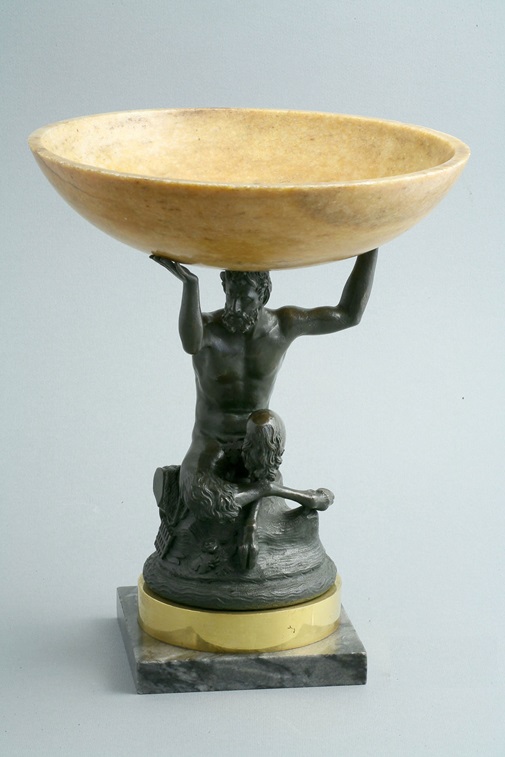Coloured stones
Articles of Russian hard stones, the making of which was a time-consuming process demanding at the same time an unfailing mastery, are works of especial excellence. They greatly add to the beauty of the Pavlovsk Palace. Rich decorative qualities of coloured stones were skilfully used by the Palace's architects in the embellishment of its interiors. Remarkable for a great wealth of their colour shades, hard stones from the Urals, especially jasper, a mineral which had over two hundred varieties, afforded to the craftsmen boundless opportunities for creating beautiful works of art. Jasper, porphyry, malachite, lapis lazuli, rhodonite, quartz and other minerals - natural treasures of Russia - had been regularly used for artistic purposes as early as the seventeenth century.
The first lapidary works for polishing coloured stones was set up in Peterhof near St Petersburg in the 1720s. The rich deposits of coloured stones discovered in the Urals and Altai demanded the establishment of stone-polishing factories nearer to these regions. Such factories were established in the 1780s, one at Yekaterinburg in the Urals and the other at Kolyvan in the remote Altai mountains. However, owing to the slow search and transportation of huge stone slabs from mountainous regions to the factories by waterways and a complex production process based on prolonged manual labour and primitive equipment, only a limited number of articles was made. The manufacture of a single large vase or bowl took dozens of years.
Only in 1793 the talented self-taught inventer Filipp Strizhkov developed a machine for the mechanical working of stone. The factory was operated by water, and if the machine were placed in the proper way, heavy slabs would be polished much faster and easier. Work on two bowls of Ridder breccia, a splendid greenish-pink jasper, which, however, often cracked when processed, was simultaneously started-one was made by the usual method and another on the new machine. Strizhkov completed the work in twenty-six days, while it took ten months to polish a similar bowl by the old method. The bowls have been sent to St Petersburg and now decorate the Grecian Hall of the Pavlovsk Palace. Here also stand colourful lilac-grey vases made of so-called speckled jasper found in the Altai. These vases were also produced by Strizhkov, who in addition to his large experience in stone-polishing had a fine taste for the beauty of stone and attained a consummate artistic perfection in his work.
To emphasize the colour effects of stone, in the 1790s bronze ornaments were introduced. The handles of vases, garlands and other decorative elements were executed according to designs by eminent architects, such as Quarenghi, Voronikhin, Rossi, etc. The well-known Soviet mineralogist Academician Alexander Fersman wrote: "Russian jasper has taken the first place in the world by the wealth of its deposits, by the magnificence of articles made of it and by its endless tonal variety."
The remarkable richness of its colours can be illustrated by the examples reproduced here. Vasily Kokovin, an outstanding master craftsman from the Urals, made two vases from very hard greyish-green Kalkan jasper in the shape of low covered goblets and decorated them with a fine carved pattern of acanthus foliage. The body of each vase is adorned with a band of mesh design. The blend of perfectly polished stone with matt carved work lends the vases an effect of elegance and ease. This is the earliest example of ornamental carving of stone vases. Both vases are signed by the maker and dated 1808-9, which is rare, for usually a craftsman had no right to sign his work. Russian craftsmen evolved a method called "Russian mosaics": valuable materials, such as lapis lazuli or malachite, which usually occur as huge boulders, when cut into thin slabs could be used to cover large surfaces with an impression of a solid stone. This method was used to decorate many mantel-pieces in the Pavlovsk Palace, the Malachite Room in the St Petersburg Winter Palace, the columns of the iconostasis in St Isaas's Cathedral and a great number of excellent malachite vases now in the Hermitage.
The bright, colourful works notable for the subtle taste and superb skill of their makers aroused interest in Western Europe as well. Many beautiful objects in hard stone were sent abroad as diplomatic gifts. Articles of Russian coloured stones now grace many European palaces.




